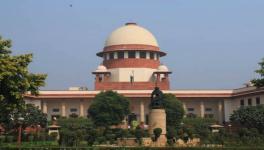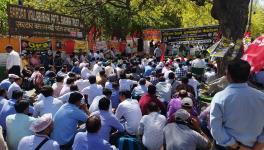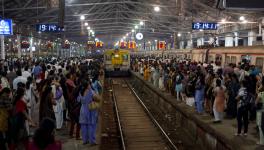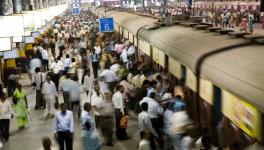A Sigh of Relief... But, For How Long?
File Photo.
The Supreme Court of India on Thursday stayed the eviction order by the Uttarakhand High Court of people living on ‘Indian Railway land’ over a strip of nearly 2.5 kilometres since Independence. This is a big relief to over 50,000 people living on this stretch who otherwise would have become homeless overnight. Haldwani is a town in Uttarakhand and the state’s Bharatiya Janata Party (BJP) government maintained that it would follow the court orders, either way.
The Haldwani case presents a classic case of thousands of people’s habitat in cities, some on Railway land, others on government and even on private land. This form of encroachment is a kind of answer by the poor to the various development authorities who have designed and planned cities in the past, demonstrating how myopic and faulty these plans have been.
Haldwani presents another interesting case where the State apparatus over the years has invested largely in the social sector and the authorities were quiet when such investments were made. According to media reports, this land had a strong social infrastructure laid out by the development agencies.
There are over 4,000 families residing in Gafoor Basti, Dholak Basti, Indra Nagar, and other slums in the said strip. There are three government schools, 11 private schools accredited by the state government, 10 mosques, 12 madrasas (Islamic schools), a government public healthcare centre, and a temple. There is a government girls inter-college that has over 1,000 students. Interestingly, this college came up in 1952 soon after India became a Republic. Likewise, there is another inter-college in Indiranagar that has over 2,000 students and a Gopal Saraswati Shishu Vidya mandir that has over 140 students.
All these structures faced the threat of demolition as they were “occupying Railway land.”
The SC has asked the government to find alternatives to ensure that the residents are not evicted overnight in the chilling winter. But that does not mean that eviction will not happen. What alternatives will be built, only time will tell. However, given the past history of creating alternatives, the poor have been thrown out of their habitat which is not just their living place but also strongly connected to their livelihoods. Building residential houses 20 km away from their current site of habitat will be more perilous.
Land and the City
Land in cities have a blurred distinction between being illegal and legal. The post-1990s period has seen massive monetisation of land and a great push for real estate development. Land laws were amended and most of the urban commons where the poor lived or used them for various activities, were handed over to private players in order to attract investments.
The development agencies in cities which have mainly been the parastatals, like the Delhi Development Authority in Delhi, Mumbai Development Authority in Mumbai, Kolkata, Mohali, etc., and the town and country planning departments in various states, were invariably guided by this principle of land monetisation.
Real estate was a driving force for post-1990s urbanisation. The old principles of development authorities to at least make provisions for the poor in the cities in the form of LIG, MIG flats, and Janata flats were abandoned and private city models like Noida and Gurgaon were developed.
This was only for the middle classes and that too the upper-middle-class sections. But the poor were required. The migrants were required to do daily jobs, maintenance jobs like domestic help, gardening, security guards, and so on. Where were houses built for them? The private city models and even the ongoing government planning lacked this vision and a large section of the people, the poor, gave their answer in the form of building their own houses, some of them on government lands and even on Railway land.
The civic authorities were also mobilised and that is how some of the basic necessities like water, electricity, sanitation, health, and education were also imparted in these areas. No wonder that as of now nearly 40% of the urban population in India resides in slums, and most of them have ‘encroached’ on government lands.
‘As Is Where Is’
This is the principle that many of the slum dwellers and their organisations have been demanding. According to Gautam Bhan from the Indian Institute of Human Settlements, Bangalore, nearly 95% of houses in the slums do not require any monetary assistance for repair or maintenance. They are good enough by modern standards. All they want is a land tenure right. Instead of uprooting them to far-flung places, it is pertinent that they are regularised on the basis of “as is where is”.
A land tenure right is a demand that emanated from the Independence movement. After all, land reforms and slogans like “land to the tiller” also were based on land rights. Land to the one who tills it. Similarly, in the urban context, the demand of ‘land tenure’ to the one who resides on it should be the clarion call. Parliament must enact the law ensuring that the people have a decent living place and the task that the successive governments should have ensured-“roti, kapda aur makan” (food, clothing, and housing) is at least legalised for those who already have constructed their houses.
The writer is the former deputy mayor of Shimla, Himachal Pradesh. The views are personal.
Get the latest reports & analysis with people's perspective on Protests, movements & deep analytical videos, discussions of the current affairs in your Telegram app. Subscribe to NewsClick's Telegram channel & get Real-Time updates on stories, as they get published on our website.























